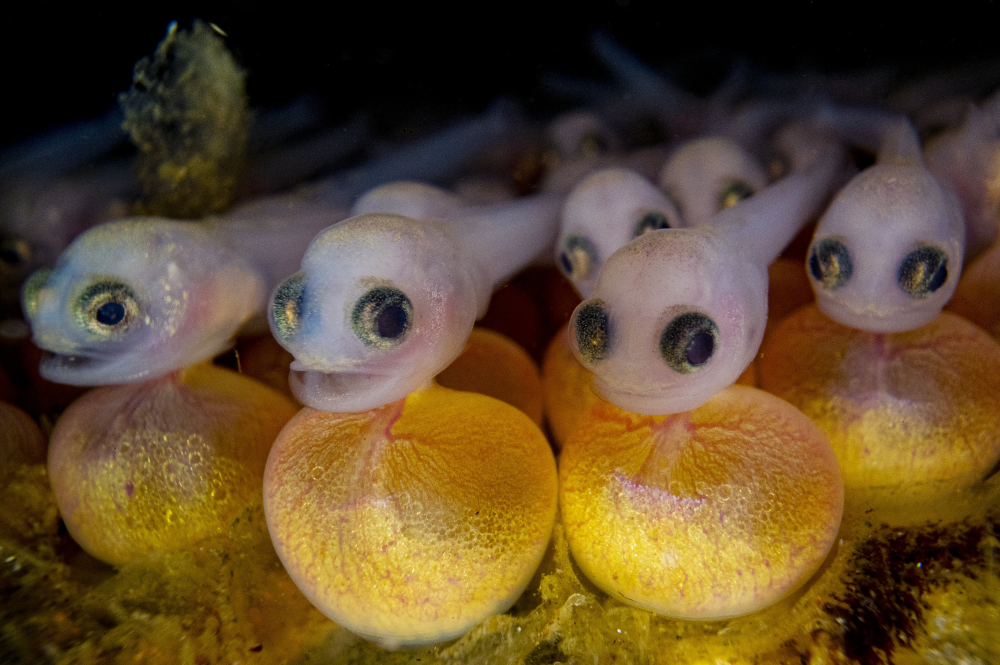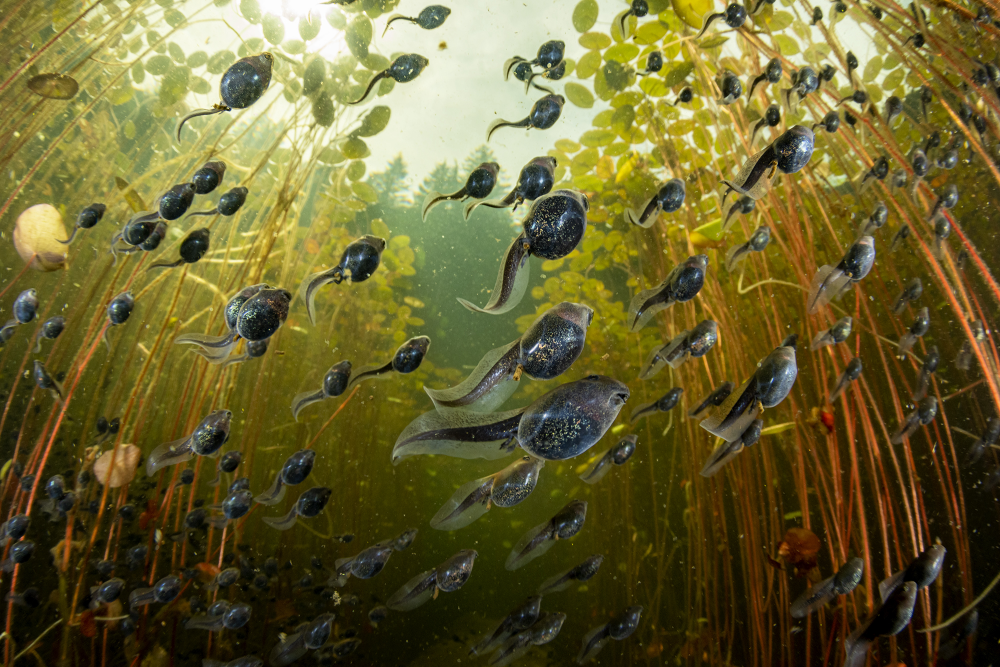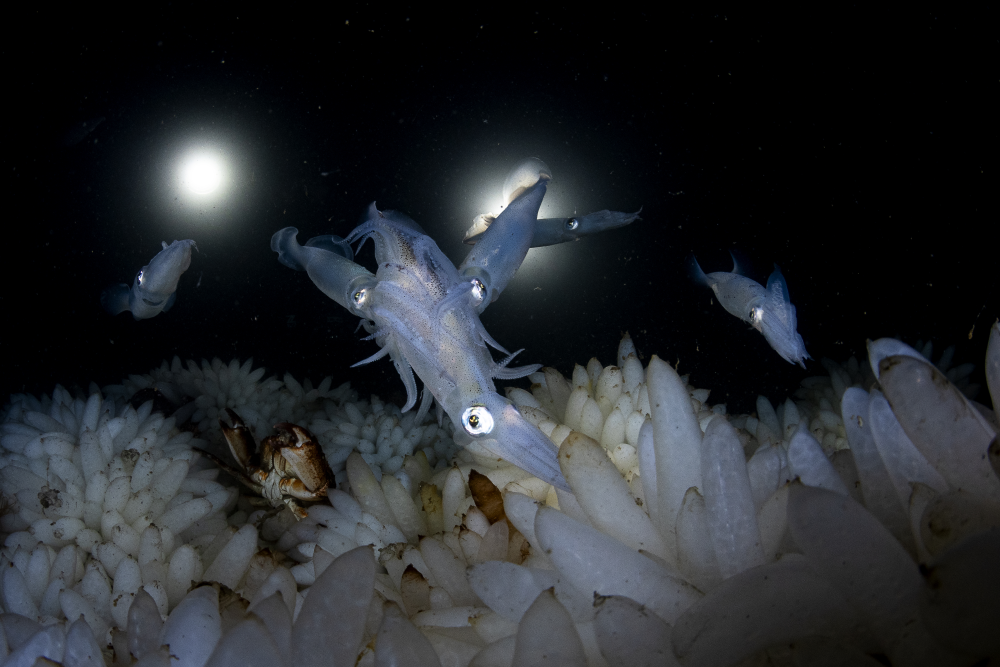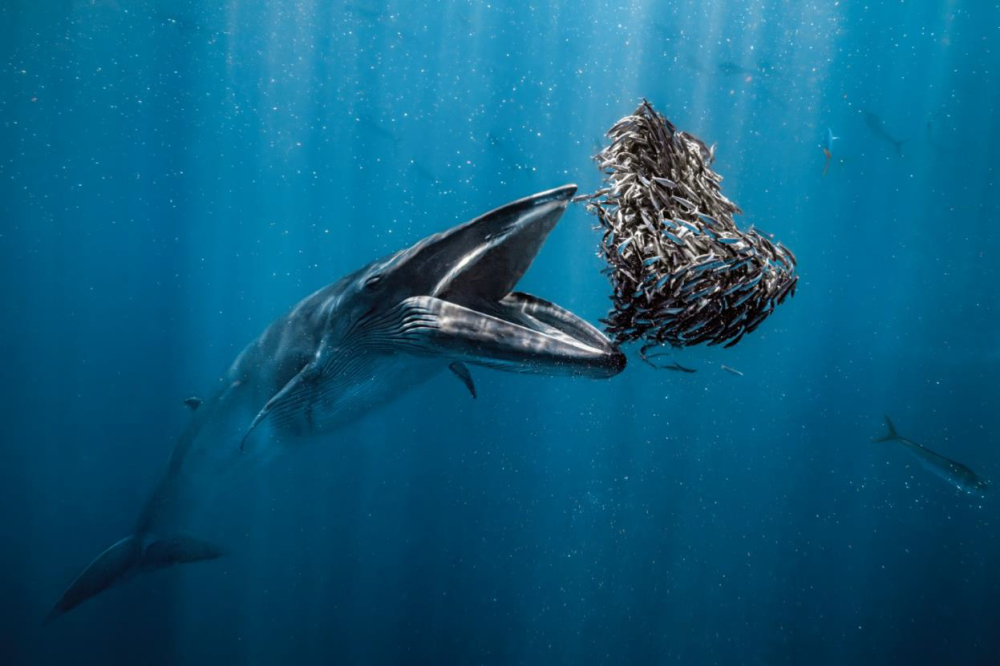The Ocean Photographer Of The Year winners have been announced, and among the many categories you can spot some truly wild animal behavior. The jack fish in the above photo hasn’t been eaten, and nor has the jellyfish become its dinner.
In the deep and dangerous sea, these two animals have formed a curious symbiosis in which the jack tucks itself inside for a safe hiding spot (like these fish in a salp). Such a move would spell death for some animals, but jacks suffer for their art.
“The small jellyfish will sting, but the fish will build immunity to the toxin,” explained photographer Katherine Lu in a statement. “The jellyfish then provides a safe haven for the fish against larger ocean predators while the jellyfish is pushed through the water column by the fish, increasing its ability to feed.”
Lu earned 2nd place in the Ocean Portfolio Award. In at 1st place for that category was Shane Gross whose selection of images really captures the alien nature of marine and aquatic babies. One that really catches the eye is a ghostly row of baby plainfin midshipman fish (Porichthys notatus) that are still attached to their yolk sacs. Gross photographed the mini ghouls in British Columbia, Canada, and apparently they weren’t alone.

Baby plainfin midshipman fish, still attached to their yolk sacs in British Columbia, Canada.
Image credit: Shane Gross OPOTY 2024
“They are guarded over by their father until they are big enough to swim out from under the rock they are living on in the intertidal zone and swim to ocean depths,” Gross said.
Another mesmerizing shot from Gross captured the delightfully round underbellies of tadpoles he snapped while snorkeling. “Western toad tadpoles migrate from the safer deeper part of a Vancouver Island lake to the sunlit shallows to feed on algae and other organic matter,” Gross said. It’s not always so easy to pin the tadpole to the species, and the search for some tadpoles’ identities has taken decades.

Western toad tadpoles migrate from the safer deeper part of a Vancouver Island lake to the sunlit shallows.
Image credit: Shane Gross OPOTY 2024
Unlike the protective father of the baby plainfin midshipman, squid must take a more hands-off approach to parenting their many, many offspring, as we see in Gross’s shot of the opalescent squid, Doryteuthis opalescens.
“The female will deposit 100 to 300 eggs into the sand and cover them with a sticky substance to anchor them to the seabed and protect them from predators,” he said. “The male squid uses its fifth arm, called the hectocotylus, to grab the female and insert spermatophores. Eggs present at the bottom of the ocean stimulate other females to lay their eggs so that vast fields of the eggs can result.”

Opalescent squid mate and lay their eggs off Vancouver Island in British Columbia, Canada.
Image credit: Shane Gross OPOTY 2024
While it was the small and alien that captured this writer’s eye, the overall winner for the 2024 Ocean Photographer Of The Year went to a much larger, but incredibly rare spectacle. Rafael Fernández Caballero took the title with an image of a rare Bryde’s whale about to devour a heart-shaped bait ball.

A Bryde’s whale takes a bite.
Image credit: Rafael Fernández Caballero OPOTY 2024
“A feeding frenzy is the biggest show on Earth for me,” Caballero said. The smallest animals on earth, plankton, attract bait balls of sardines and, in turn, giant whales show up. I was lucky to witness this show off Baja California Sur at the end of 2023. Due to El Niño and warmer temperatures, different species joined the party and I witnessed huge numbers of beautifully coloured dorados and large groups of sea lions that were attracted by the bait balls. The highlight was this whale coming out of nowhere with its mouth wide open.”
To check out the full portfolio of incredible winning images, visit The Ocean Photographer of the Year, presented by Oceanographic Magazine and Blancpain.
Source Link: Animal Armor? This Fish Wears A Jellyfish For Protection